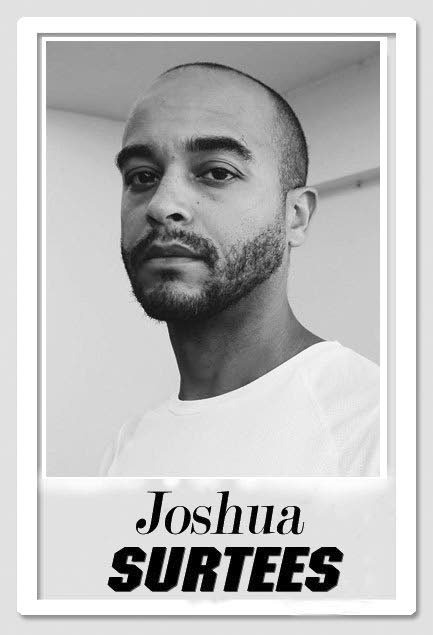Tobago needs Sandals, but does Buccoo?

Buccoo was the first place I ever stayed in TT, seeking respite from the British winter in 2012.
My first impressions were of a quiet fishing village where boats left early and returned late. Where pelicans divebombed the water, eerie mangroves hugged the beach and sandflies nipped your ankles. The queues for Shirl’s were long and the goat-racing track unused. The Venezuelan chef at El Pescador was crazy but cooked well. On Sundays the village shook to a deafening all-night party.
I have returned to Buccoo many times and know it well. It has a place in my heart. On the right day, it’s a lovely place. But it’s a strange place to build an international hotel resort. Mangrove swamps, while ecologically essential, aren’t exactly sexy – unless Ursula Andress is wading through them.
Sandals would fundamentally change Tobago. It would pump much-needed life into the island. But whether Buccoo is a better location than, let’s say, the Arnos Vale Estate – which is up for sale, surrounded by lush nature and comes with a secluded bay – is debatable.
The Buccoo decision is based on proximity to the airport, ease of access for construction, the Nylon Pool (great for poster ads) and, above all, the financial arrangement by which the government acquired No Man’s Land “cheaply” for $174 million by offsetting the cost against debts owed by the previous owners, CL Financial.
Sandals will attract wealthy holidaymakers to a country whose reputation has suffered because of cutlass attacks on elderly tourists and travel advisories about terror threats. Right now, the only tourists coming to TT are those who leave the cruise ships and venture into downtown Port of Spain. What impression they get of this diverse, throbbing, affluent society from the burnt-out buildings, skyscrapers and vagrants is hard to say.
TT needs tourism development, but we should heed Afra Raymond’s warnings about the underlying commercial arrangements – thus far kept invisible. From Raymond’s probing of the Hyatt, Hilton and Magdalena Grand projects, we know that the finances of those government-built, brand-managed establishments are murky, unaudited and do not reveal whether they benefit the taxpayers who funded them.
Without seeing the macro benefits to the nation in terms of the estimated Sandals revenue, we cannot assess whether the environmental and social impacts are worth it.
And what about the micro view – the people who live in Buccoo?
Winston Pereira, owner of Miller’s guesthouse where I first stayed, expressed ambivalence and cautious optimism. The tourist season 2017/18 was the worst Tobago has experienced, he told me. And the lack of information on contractual arrangements with Sandals leaves the future open to speculation. But he believes the project will improve “airlift, destination visibility, branding, improvement of service delivery,” and act as a “catalyst for the existing industry.”
His concerns are whether the government will maximise “the full socioeconomic potential... as a driver of upstream and downstream economic activity [providing] wealth creation and long-term sustainable human capital development, rather than monolithic dependence for Tobago.”
He cited disruption to wildlife as an issue but said "the business community in Buccoo should see a welcomed boost in revenue both pre and post construction.”
So, about that wildlife… At a TT Field Naturalists Club meeting in March, ornithologist Matt Kelly showed pictures of the herons, warblers and cuckoos that live and hibernate in the mangroves. At TEDx 2017, marine zoologist Rahanna Juman explained how mangroves protect coastal areas from floods and storms. Patricia Turpin of Environment Tobago told me that nurseries of pelagic fish, lobster, crabs and conch will be destroyed, impacting fishing stocks. She has many questions for Golden Grove-Buccoo Ltd (GGBL), the state enterprise managing the Sandals project, and has raised them via the Environmental Management Authority (EMA), in response to GGBL’s application for a certificate of environmental clearance (CEC).
Among other things, she wants to know where the brine from desalinated sea water will be dumped.
In GGBL’s CEC application, questions about disposal of waste materials, diversion of water courses, sewage, drainage and pesticides were answered: “to be identified during detailed planning.”
Environment Tobago is pushing for an environmental impact assessment (EIA) to probe these issues.
Turpin says Angostura, owned by CL Financial, submitted plans to build two hotels in the 2000s, but the CEC said they could not remove the wetlands or build on No Man’s Land, so they pulled out.
If the EMA does not include a requirement for an EIA in its terms of reference for Sandals, she says, then the government is using “ministerial override” to grant a CEC, bypassing the process.
“If the government does that we would have to go to court,” she says.
It’s not a threat, it’s a fact. And unless the government wants another situation like the Highway saga and its accompanying protests, legal challenges and hunger strikes, it should think carefully about how it proceeds.
The country may want Sandals, but it wants it done properly, sustainably and transparently.


Comments
"Tobago needs Sandals, but does Buccoo?"